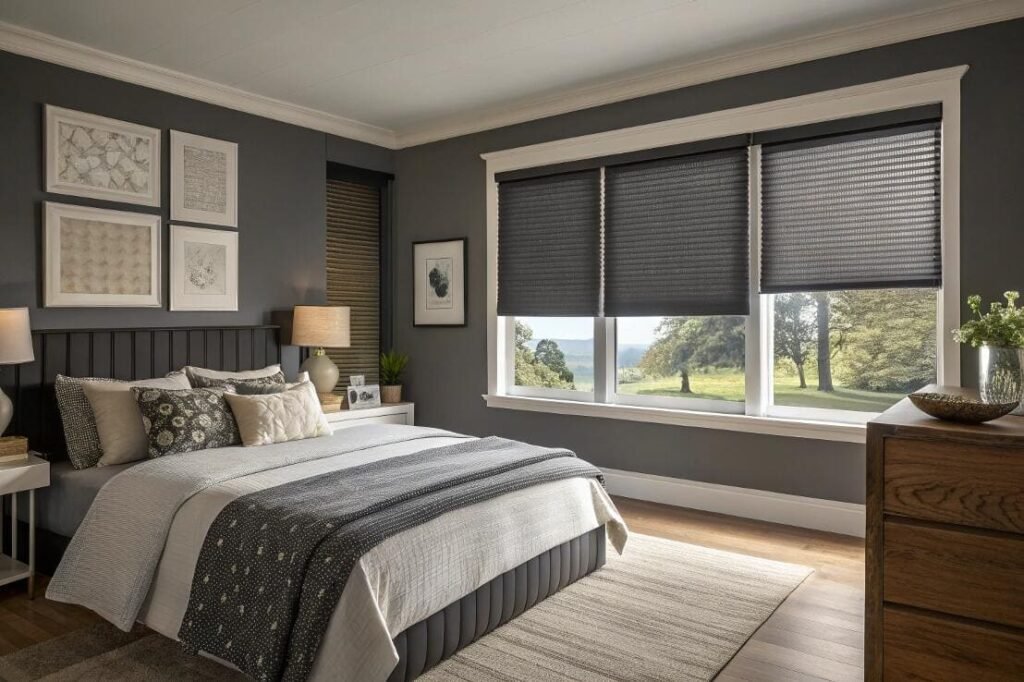You need absolute darkness to sleep, but you're skeptical. You've heard that so-called "blackout" products often fail, letting in annoying slivers of light that ruin the effect.
Blackout blinds are extremely effective, capable of blocking 99-100% of light when installed correctly. Their dense fabric not only creates a night-like environment but also provides top-tier privacy[^1] and adds a layer of insulation[^2] to your windows.
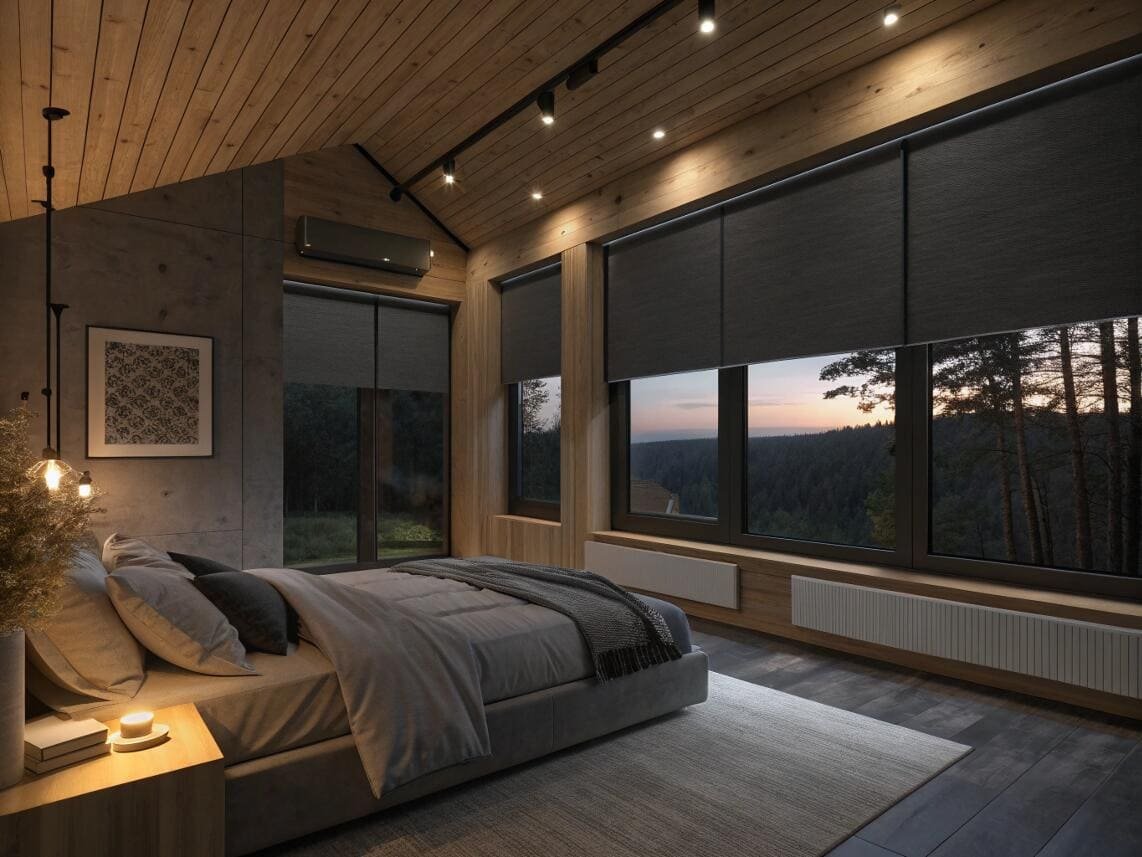
This question is one I tackle weekly with project managers like Emma. She often works on high-end residential projects where a client, perhaps a shift worker or a parent with a newborn, demands a perfectly dark room. They've been let down before. The secret isn't just in the fabric; it's in the fit. A great blackout blind installed poorly is a waste of money. Let's get into what makes them work and how to avoid the common pitfalls.
How effective are blackout blinds?
You're trying to create the perfect sleeping environment or media room. You need to be sure that investing in blackout blinds[^3] will actually deliver the total darkness[^4] you're after.
They are highly effective. A quality blackout blind can block nearly all incoming light, which significantly improves sleep quality[^5] by supporting your natural melatonin production. This dense material also blocks harmful UV rays, protecting your furniture, floors, and artwork from fading over time.
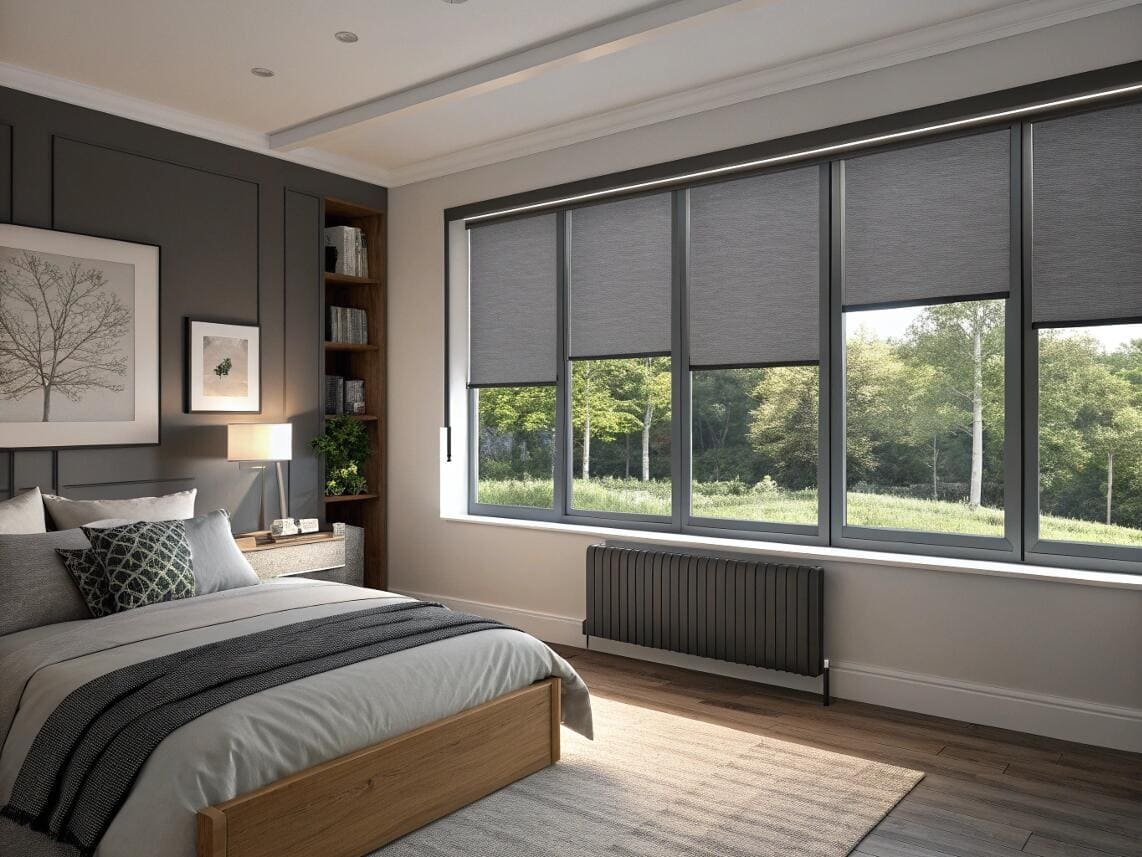
More Than Just Darkness
The effectiveness of blackout blinds goes beyond just blocking light. They are built differently from standard light-filtering shades[^6]. The fabric is often a multi-layered composite, sometimes with a core layer specifically designed to be completely opaque. This construction does two other important jobs.
First, it creates a powerful shield against prying eyes. True blackout fabrics offer zero view-through, day or night. Unlike some blinds that might show silhouettes when the lights are on inside, these provide complete privacy, which is a huge plus for bedrooms and bathrooms on the ground floor. It adds a real sense of security.
Second, that thick, dense fabric acts as an insulating barrier. It helps block solar heat[^7] from entering during the summer, which can lead to noticeable savings on your air conditioning bills. In the winter, it does the reverse, helping to keep warmth inside the room. This energy-saving[^8] aspect is something clients are increasingly asking for, and it's a benefit that pays you back over time.
What are the disadvantages of blackout blinds?
You love the idea of total darkness[^4] for sleeping, but you're worried about the downsides. Will your room feel like a cave during the day, and are there other trade-offs you haven't considered?
The main disadvantages are their all-or-nothing light control[^9], the potential for rooms to feel too dark, and reduced airflow. They are either fully open or fully closed, with no option to tilt for soft, ambient light.

The Trade-Offs of Total Blackout
While blackout blinds solve the problem of light, they do introduce a few challenges we need to be honest about. I always discuss these with my clients to make sure it's the right fit for their lifestyle.
- The "Cave" Effect: The biggest drawback is that they can make a room feel dark and disconnected from the outdoors during the day. If you work from home or spend a lot of time in the room, the lack of natural light can affect your mood and internal clock. They are perfect for bedrooms used only at night, but less ideal for a living room.
- Binary Control: Unlike Venetian blinds that you can tilt, blackout roller shades are binary—they are either up or down. There is no in-between. This frustrates people who want to simply reduce glare while still having some natural light.
- Heat and Airflow: While they block solar heat from entering the room, the heat can get trapped between the blind and the window glass. This is especially true with dark-colored fabrics facing direct sun. You need to ensure you have a ventilation plan in the summer.
- Maintenance: One small thing I always mention is that dark-colored blackout fabrics show dust and lint much more easily than lighter colors. They just require a bit more frequent cleaning with a microfiber cloth or a vacuum brush to keep them looking sharp.
Do blackout blinds stop people from seeing in?
You need to guarantee privacy in a bedroom or a street-facing office. You're concerned that some blinds might still reveal shadows or silhouettes to people outside, especially at night.
Yes, absolutely. Blackout blinds provide 100% privacy. Their opaque material ensures that no one can see inside your room, day or night, even when you have the lights on.

The Ultimate Privacy Solution
This is one of the strongest selling points of blackout blinds and a key reason they are chosen for sensitive spaces. I've had clients specifically request them for ground-floor apartments and for conference rooms where confidential meetings take place. The privacy they offer is total.
The science is simple: the fabric is non-porous to light. Unlike solar shades, which are designed with a specific "openness factor" to preserve the view, blackout fabrics have an openness factor of 0%. This means light cannot pass through, and therefore, shapes and silhouettes cannot be projected.
This is a critical difference compared to many other window treatments[^10]. Light-filtering or sheer shades become transparent at night when you turn the lights on inside. Even some room-darkening curtains can reveal shadows. With a true blackout blind, you can have every light in the room blazing, and from the outside, the window will appear completely dark and opaque. This level of security and peace of mind is unmatched.
Is it better to have blackout blinds or curtains?
You're standing in your room, trying to decide between the sleek fit of blinds and the soft look of curtains. Both can offer blackout options, but you're not sure which is functionally better for your space.
It depends on your priorities. Blinds offer a cleaner, space-saving fit that's ideal for small windows. Curtains can provide better insulation and add more decorative texture. For the best result, consider layering both.
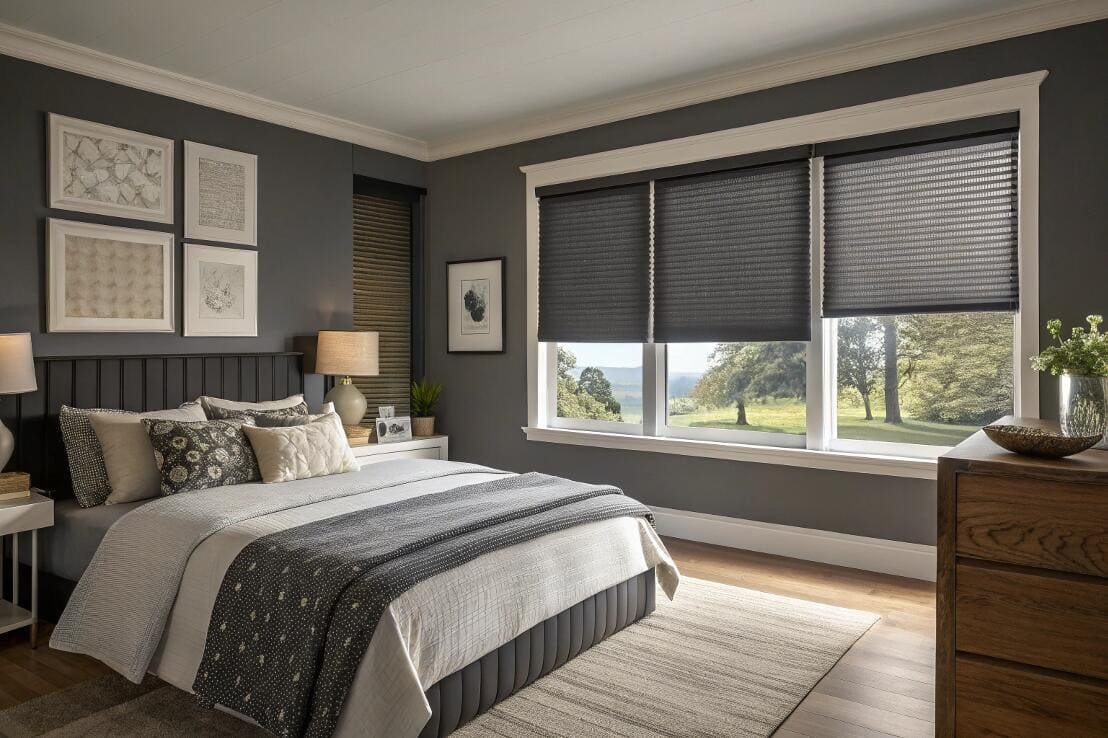
Blinds vs. Curtains for Blackout
Let's break down the decision. Both can be effective, but they serve slightly different functions, both practically and aesthetically.
| Feature | Blackout Blinds | Blackout Curtains |
|---|---|---|
| Fit & Space | Sleek, inside-mount fit. Saves space, creates a minimal look. Ideal for small or modern rooms. | Bulky, mounted outside the frame. Takes up wall and floor space. |
| Light Blockage | Very effective, but prone to light gaps[^11] on the sides unless using side channels[^12]. | Can provide better edge coverage by extending far beyond the window frame. |
| Insulation | Good. The material provides a thermal barrier directly against the window. | Excellent. The heavy fabric and folds trap a significant layer of air. |
| Style | Modern, clean, and minimalist. | Softer, classic, or dramatic. Adds texture and color to a room. |
My advice? Don't think of it as an either/or choice. The best solution, especially for large windows, is often to layer them. I frequently recommend installing a blackout roller blind fitted perfectly inside the window recess. This gives you the core function of total darkness[^4]. Then, you can add decorative curtains on the outside. This gives you the soft, stylish look of drapery and adds another layer of insulation, while the blind does the heavy lifting for light control.
Why can I still see light through my blackout curtains?
This is incredibly frustrating. You've spent money on blackout blinds or curtains, yet you're still woken up by annoying slivers of light around the edges.
You see light because of gaps between the blind and the window frame, not because the fabric is failing. This "halo effect" is the number one reason a blackout installation disappoints.
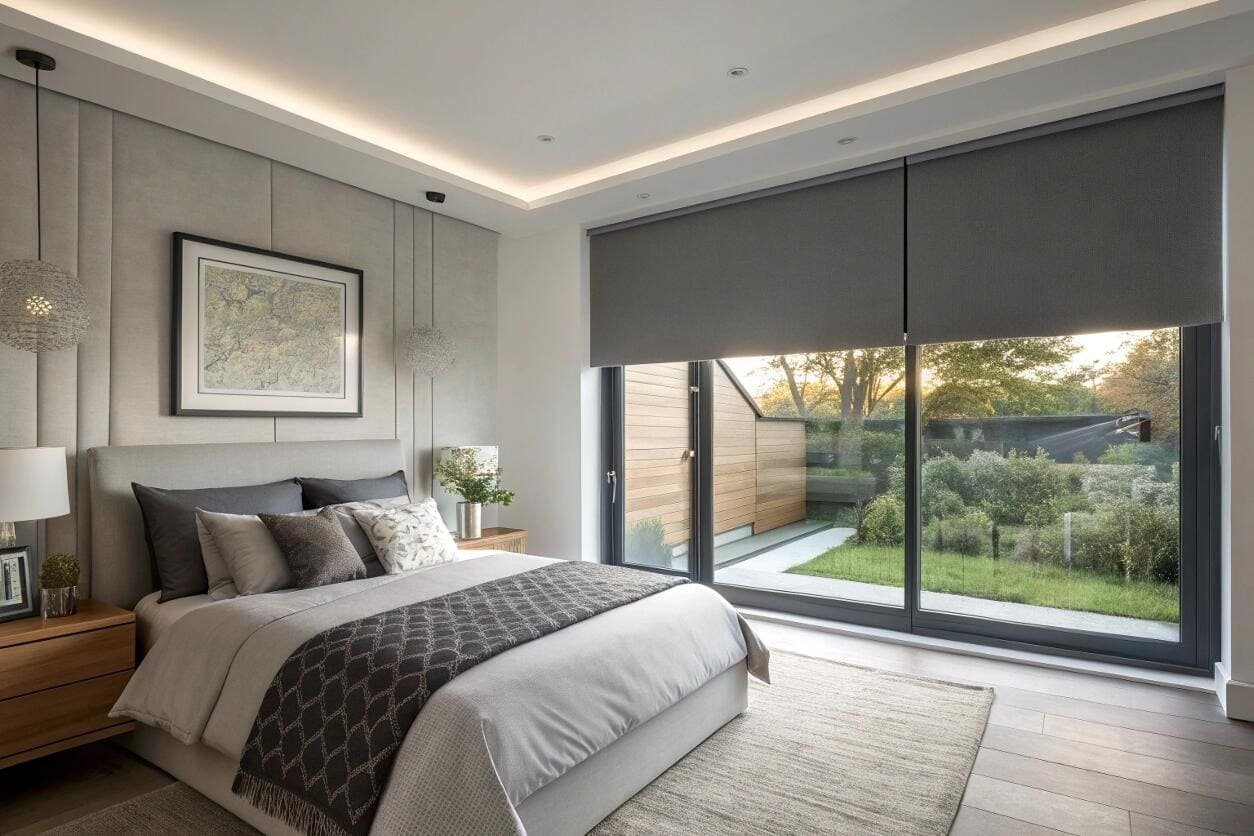
Winning the War on Light Leaks
I can't stress this enough to my clients: the fit is everything. The fabric can block 100% of light, but if it doesn’t cover the entire pane of glass, light will find a way in. Here’s how we fix it:
- Precision Measurement: For an inside mount, the blind must be measured perfectly to be as wide as possible within the recess. But even with a perfect measurement, there will be tiny gaps on each side to allow the blind to operate without scraping the frame. These are the main culprits.
- Outside Mounting: A simple solution is to mount the blind outside the recess. By making the blind several inches wider and taller than the window frame, you can cover all the gaps. This is a very effective method.
- Side Channels: For the ultimate blackout solution, we use side channels. These are U-shaped aluminum tracks that are installed on the sides of the window frame. The edges of the blackout fabric slide inside these channels, physically blocking any light from leaking in around the sides. This is the system we use for home theaters and labs where absolute darkness is non-negotiable. It creates a complete seal against light.
What works better than blackout curtains?
You need the best possible solution for darkness and light control. While blackout curtains are good, you're looking for a system that offers more flexibility and performance.
For superior performance, a dual-roller system or blackout cellular shades[^13] with side channels work better. These solutions offer both 100% blackout capability and the flexibility to have filtered light when you want it.
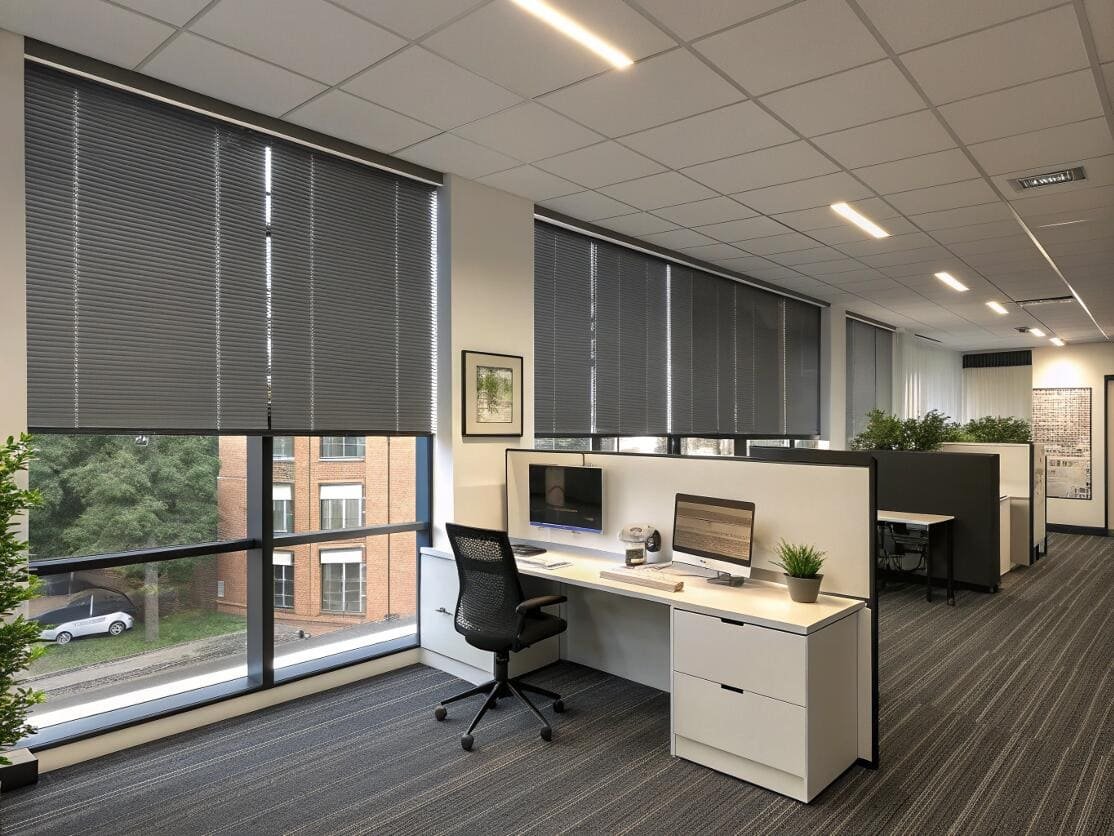
The Next Level of Light Control
For clients who want it all—total darkness and flexible daytime light—we move beyond single-function products. Here are the top-tier solutions:
-
Dual Roller Blinds: This is my favorite system. It combines two different blinds in one sleek headrail. Typically, we install a blackout blind as the back layer and a light-filtering solar shade as the front layer. During the day, you use the solar shade to cut glare and UV while keeping your view. At night, you lower the blackout layer for complete darkness and privacy. It's two blinds in one, offering incredible versatility.
-
Blackout Cellular Shades: These are an amazing product. The honeycomb-shaped cells trap air, making them fantastic insulators—even better than standard blackout blinds. When made with blackout fabric and combined with side channels, they provide one of the most complete light-blocking and energy-efficient solutions on the market.
-
Motorization and Automation: Adding motorization[^14] to any of these systems takes them to another level. You can schedule your blackout blinds to lower at sunset and raise in the morning, helping regulate your sleep cycle. It's a premium upgrade, but for many, the convenience is worth the investment.
Conclusion
Blackout blinds are incredibly effective for darkness, privacy, and insulation. Their main drawback is limited light control, but solutions like dual-rollers can fix that. Success depends entirely on a professional fit to eliminate light gaps.
---
[^1]: Learn how blackout blinds provide complete privacy, making them ideal for sensitive spaces.
[^2]: Find out how blackout blinds can help save on energy bills by providing insulation against heat and cold.
[^3]: Explore how blackout blinds can transform your sleeping environment by blocking nearly all incoming light.
[^4]: Discover the importance of total darkness for improving sleep quality and supporting melatonin production.
[^5]: Discover the connection between blackout blinds and enhanced sleep quality for better rest.
[^6]: Understand the function of light-filtering shades and how they differ from blackout options.
[^7]: Learn how blackout blinds can help keep your home cool by blocking solar heat.
[^8]: Find out how blackout blinds can contribute to energy savings in your home.
[^9]: Understand the various light control options available and how they can affect your living space.
[^10]: Explore various window treatment options to find the best solutions for light control in your home.
[^11]: Understand the common issue of light gaps and how to prevent them for optimal darkness.
[^12]: Explore how side channels can eliminate light leaks and enhance the effectiveness of blackout blinds.
[^13]: Learn about the energy efficiency and light-blocking capabilities of blackout cellular shades.
[^14]: Find out how motorization can add convenience and control to your blackout blinds.Partner with VelaBlinds for Your Next Project
Smart window treatments shouldn't be complicated. After working with 500+ distributors and contractors worldwide, I've streamlined the process to get you quality products, competitive pricing, and reliable support - every time.
Why project professionals choose VelaBlinds:
- ✅ Fast, Accurate Quotes - Detailed specs and pricing within 24 hours
- ✅ Transparent Pricing - No hidden fees, volume discounts clearly outlined
- ✅ Quality Assurance - Direct partnerships with certified OEM manufacturers
- ✅ Project Support - Dedicated account manager from quote to delivery
Start your next project:
📧 Quick Quote: Send your requirements to info@velablinds.com
📱 Direct Contact: WhatsApp +86 137 2012 8317
🌐 Browse Solutions: https://velablinds.com/
📁 Product Resources: Access spec sheets, catalogs & project files
Paul Chen, Founder
"I built VelaBlinds to solve the real challenges I faced as a project buyer - long lead times, unclear specs, and unreliable suppliers. Let's discuss how we can power your projects with smarter blinds."
Serving distributors and contractors across North America, Europe, and Australia since 2018.

